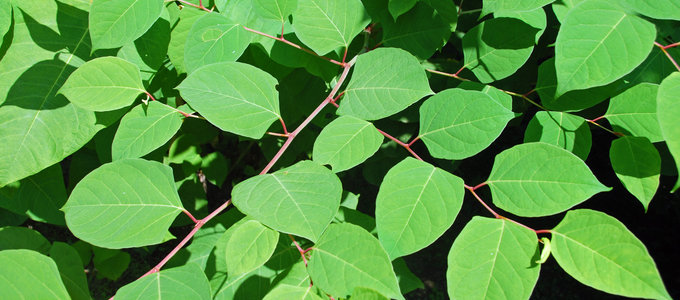Selling Your Property? Be Honest About Japanese Knotweed

You may not be aware, but there have been two legal cases recently which have shocked many people to do with identifying and owning-up to having Japanese Knotweek (JK) on their property.
Recent JK decisions in litigation cases
Davies v Bridgend County Borough Council [2023] EWCA Civ 80 – property owner can recover damages for loss of value even where JK has been eradicated, but the stigma attached to the property remains and causes loss.
Henderson v Downing (2023) – ticking the “no” box on a TA6 form, should not be done unless the seller is 100% sure that there is no JK at the property. Unless you are an expert in the field of horticulture, you should not place yourself in a difficult position by stating ‘no’. It is far better that you state ‘unknown, buyer to obtain expert advice’. If you positively assert that there is no JK, and it later becomes evident that there is, you will be open to a claim against you.
The above cases highlight the fact that it is expected that there will be a raft of cases waiting to happen in this area of property litigation.
The Sellers Information Form
Don’t fall foul of the law by putting “NO” to having any knowledge of Japanese Knotweed, if you know that JK exists, one seller did and it cost him hundreds of thousands of pounds in legal fees. You are legally obliged to answer ALL questions honestly.
Invasive Weeds
Japanese Knotweed, and some other pernicious weeds, are mentioned in The Weeds Act of 1959. There are many, mainly non-native, plants not covered by the Weeds Act 1959, which are considered to be invasive. The following are perhaps the most widespread:
-
Japanese Knotweed
-
Giant Hogweed
-
Himalayan Balsam (a particular problem for riverbank erosion)
-
Rhododendron
-
New Zealand Pigmyweed
-
Bamboo
-
Ivy.
The trouble with JK is that it invades neighbouring land and properties. The offshoots and roots can climb as high as 3 metres and so flats/apartments also need to consider JK. JK is not the most evasive plant in the UK today, but it remains as one of the most serious evasive plants because of the difficulty in eradicating it, which can take years, and the costs involved in eradication and repair works to buildings. It looks harmless enough, but the foraging roots and offshoots grow fast and can break through concrete, tarmac and any fence you wish to put in their way. There is subsequently a real stigma against a property with JK growing.
It is important to note that JK looks dead in winter, but beneath the surface it is very much alive. As such, JK looks very different in all four seasons, and it takes an expert to be able to identify these plants at various times of the year. It is no defence to state that you didn’t see it at your property, or that you didn’t recognise it.
In Henderson v Downing (2023) – Accountant Jeremy Henderson fell foul of JK growing at the house he was selling. He sold it for £700,000 in Raynes Park, London in 2018, signing the seller’s information declaration form and saying that there was ‘no’ JK present at the property. It was later found to be growing there by his purchaser Jonathan Downing who sued Henderson for misrepresentation (in other words he contested that he had lied on the form), and Downing won the case even though Henderson stated he had no knowledge of it growing there. Henderson had to pay legal costs of £200,000, and a probability that he might have to sell the new house he’d moved into to settle the court and legal fees.
What’s the advice for Japanese Knotweed?
If there is JK at the property and you, the seller, know it, you MUST state that there is JK on the property information form.
For everyone else, we advise clients not to tick ‘no’ on their declaration form (to there being Japanese Knotweed at the property). We recommend sellers write ‘not known / seller to get an expert to confirm’ in the space for an answer. Otherwise, you too could be held to have misrepresented the property to your purchaser.
-
A thorough surveyor’s investigation is the only way to satisfy the presence of JK.
-
A mere glance at the grounds of a property is not enough. You must look behind structures, such as sheds etc to ensure there is none. If you cannot access part of your garden, you must state that you cannot confirm if JK is in the garden as parts of the garden were inaccessible.
-
Always do a Google Earth search of the garden and surrounding areas and look for photographs from the different seasons, to see the growth of any JK. JK dies back in winter but it is very much alive at the roots, so you need to be able to identify JK both in winter and summer.
-
If there is a nearby railway line, carry out a surveyor’s inspection / Google Earth search of the land between the railway and the property. Railway lines are notorious for the spread of JK.
-
For valuation surveyors: when valuing a property with JK, you must value the property taking everything into consideration and then deduct for JK, depending on how serious the problem is.
-
Royal Institute of Chartered Surveyors (RICS) now make it a Professional Standard as to how JK is dealt with, whereas previously, it was just guidance. They also have full details on their website in relation to invasive species and JK.

Judith Owen, Lawson-West Dispute Resolution Solicitor adds:
“Japanese Knotweed is no joke and simply by ticking the wrong box on your seller’s information form can give rise to a misrepresentation claim and if upheld by the court, potentially huge legal fees to pay. It’s just not worth it. A simple tick in the “Don’t Know or Not Known” box is best plus a comment in the space below suggesting a full independent investigation is made.”
Contact our Dispute Resolution team here - Contact Us.
Read more:
[Withdrawn] Wild plants: dangerous, invasive and protected species - GOV.UK (www.gov.uk)
Man forced to pay £200,000 for failing to declare Japanese knotweed | UK News | Metro News
Japanese knotweed and residential property (rics.org)
View all


